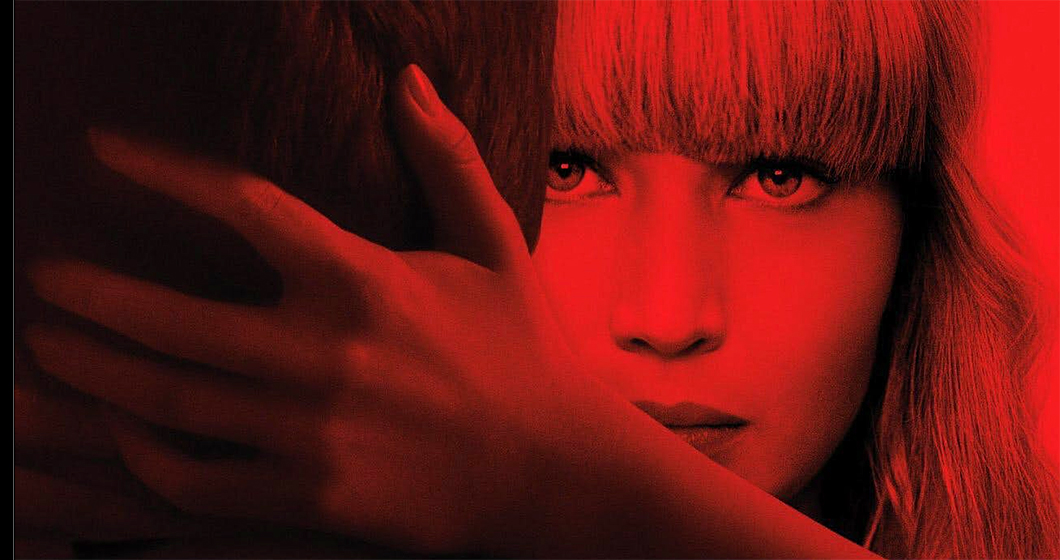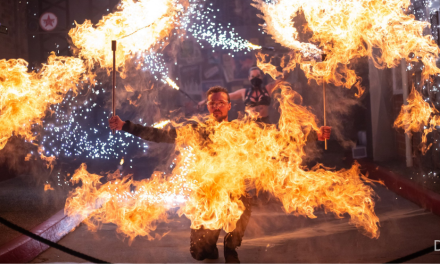Red Sparrow is a solid spy film but it is not an easy watch. It’s a low-key throwback to Cold War-era spy films, but distinguishes itself through cruelty to its characters and, to a lesser extent, its audience.
Broadly speaking, there are two types of spy films. One is quiet, with deals in narrow alleyways and dimly lit apartments, while the other starts out that way, then everything explodes into car chases in the third act. Red Sparrow is very much the former, which makes sense, given the subject matter.
After an injury ends her ballet career, Dominika (Jennifer Lawrence in outstanding form) is recruited to the infamous ‘Sparrow School,’ also known by the banal name ‘State School 4.’ After a horrifying and sadistic training program, she is deployed on a counter espionage mission to smoke out a mole in the Russian intelligence service, but an American agent (Joel Edgerton) thinks she’s recruitable. And so the game begins, with everyone left to wonder who is playing who. Given the premise, it’s a wise move to keep it low-key
The Sparrow School was a real Cold War-era program. It took young Russians, always beautiful or handsome, and taught them how to seduce the enemy, make them give up secrets. It sounds utterly absurd, like something from a James Bond film, but it does go to show that truth is often stranger than fiction. Still, with such a ridiculous sounding premise (even though it really existed) the film leans heavily away from any sort of Jason Bourne/James Bond/Atomic Blonde sort of spy shenanigans. There are no car chases, microfilms, or guns hidden inside pavlovas. It’s a grounded, dare I say it, gritty spy film – and perhaps a little too much so.
Much of the film is spent humiliating the main character. Her initial accident is a horrifying, crippling incident, shown in detail. The training program she goes through is largely based around humiliation, as she is broken down and inured to things that she finds disgusting. She’s taught, by force, that her body is nothing more than a tool in service to the state, the brutal reality of the old ‘use sex as her weapon’ cliche. When an operation goes wrong, she is tortured, again, quite graphically. The film doesn’t exactly revel in it but it doesn’t flinch, either.
It’s easy to understand the urge to distance one’s spy film from any sort of cliché, especially the weightless, meandering, low stakes world with the constant appearance of danger, but no actual danger that marked all the early Bond films, which remains what most people think of when they hear the word ‘spy film.’ But this seems to go just a tad out of its way to humiliate Lawrence repeatedly. The violence, while sparse, is brutal. It’s a little jarring, though, when scenes of her being sexually humiliated sit alongside scenes where her lingerie clad posterior is perfectly lit.
Maybe it came from Lawrence, who does throw everything into this movie. It’s a reminder of how very good she can be. She plays a ballet dancer at first, and if there’s any trickery involved in her dancing, it’s seamless. There’s enough where you can see her face to be impressed. Getting that good at ballet, for only one scene, is, to me, far more impressive than an actor learning krav maga or whatever they teach actors now. She physically puts herself through the ringer for the movie, and it’s very hard to not be impressed.
It may be a little cruel, but it is a well crafted movie. It looks amazing, largely shot on location through Europe. The camera sticks close to characters or peers surreptitiously through gaps, making us nervous about what’s waiting around the corner. Director Francis Lawrence uses all the tricks of the well-worn tradition of European shot spy films, often based on books written by former spies (though, ironically, that also describes the more ludicrous era of James Bond films) like John le Carre, Frederick Forsythe and Graham Greene. This film, based on the novel of the same name by former CIA operative Jason Matthews, fits in well.
It is not a period film; it is contemporary, though you wouldn’t know it from the film’s description, or even watching the movie. It was twenty minutes before I saw something that couldn’t have been from before the fall of the Berlin wall. It makes sense given the world’s present uneasy relationship with the old-new-new-old Russia. Even the casting fits in with the classics, with not a single Russian actor anywhere to be found. It’s overwhelmingly British and American actors, with one Ukrainian and a German (who, amusingly, has the worst Russian accent in the film) The one American is, of course, played by an Australian.
The cast consists of outstanding actors popping up in supporting roles, like Ciaran Hinds, Jeremy Irons, Mary Lourise Parker, and Charlotte Rampling. Rampling, in particular, does well, playing the Sparrow School’s horrifying matron. She seems to enjoy how much her character gets to swear, and there is a thrill to hearing a classically trained British actor say things like that with a fake Russian accent. Just like old times.
Ultimately, it’s a very good, though familiar, example of the genre, from the opening ballet sequence through to the climatic confrontation on a runway, where all serious spy movies are mandated to have a climatic confrontation. It’s a bit grim and heavy handed, and is nearly 2.5 hours long, which exacerbates the effect. However, the nastiness of the film also means you’ll be too busy squirming to call the twists, which is a novel way to deal with a familiar genre. A solid film, but not a date movie.
6/10

Reviewed at Dendy, home of quality cinema






